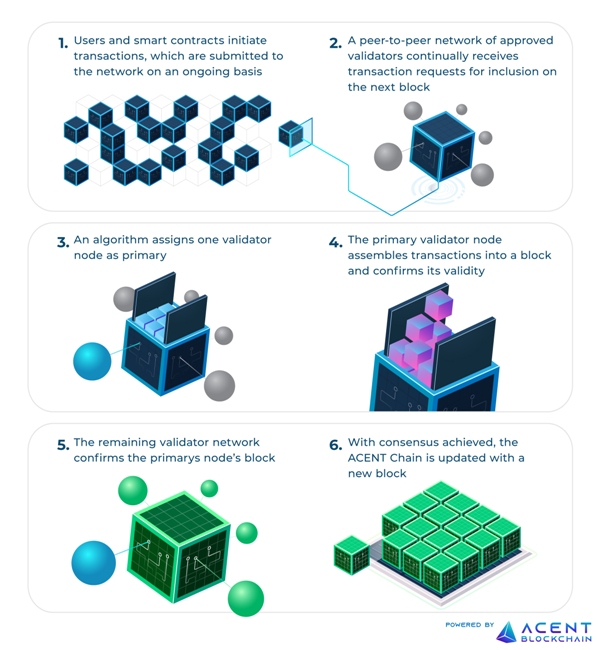Acent Mainnet
Current blockchain networks, such as Ethereum, are not built for high-performing applications. With only an average of 17 TPS, it is almost impossible to have real-time transactions, let alone load them with heavy graphics.
The Acent Mainnet is being built to become a more efficient and secure blockchain infrastructure in the market. Acent’s codebase, which is the Open Ethereum Parity 3.3.5 stable version, can be easily configured and supports several unique APIs, making it more accessible for businesses, developers, or individuals interested in adopting blockchain technology for meta- application deployment. Due to its ease of customization, it is suited for modular adoption. It is ideal for projects that require light integration of blockchain into their service or product.
The Acent Mainnet addresses the issue of slow cryptocurrency transactions by making its system light, highly scalable, and interoperable. It has a unique consensus mechanism called the Proof of Stake Authority (POSA), which requires only a few validators to process a stable 400–500 transactions per second securely. Future updates will introduce higher TPS solutions as the network undergoes updates.
The Acent mainnet relies on “authorities” instead of nodes to solve arbitrary mathematical problems. Data on-chain is signed off by the majority of authorities to become part of the permanent record. Usually, there is higher accountability and security in this approach than in a network based on Proof of Work (POW) consensus algorithms.
Among other advantages of the Acent Mainnet over the other networks include:
- maximized incentivization of EDAO holders through the distribution of Acent from the ASAP (Acent Substance Accumulation Pool) into the UBI earnings pool.
- savings for users and businesses through lowered or cheaper transaction fees.
- accelerated adoption and enhanced user approachability through integration with the Acent Web 3.0 (Osiris Web 3.0) browser.
- more consistent throughput as blocks are validated at regular intervals.
- integrating tools and ecosystems, which results in a seamless experience while maintaining TPS speeds.
- less computationally intensive. Mining requires lots of computation, but having a few validators or authorities will speed up the process;
- provides better graphic performance with lower transaction latency. Its crypto engine interface architecture makes it easy to work with high-end gaming and entertainment tools like Unreal Engine 5 and Unity; and
- less potential for security invasion. An attacker with an unwanted connection or hacked authority can not overwhelm a network, potentially reverting all transactions.
By utilizing the Acent Crypto Engine API, the Acent Mainnet addresses latencies in cryptocurrency transactions without sacrificing the graphic resolution and performance of Triple-A applications in its system. This is possible through a careful orchestration of the Acent blockchain, DAPPX functionality on the Acent Web 3.0 (Osiris Web 3.0) browser, and Metawallet integration via the Acent Crypto Engine API.

Below is the result of the beta testing of ACENT’s POSA using 4 validators via the JMeter test:



